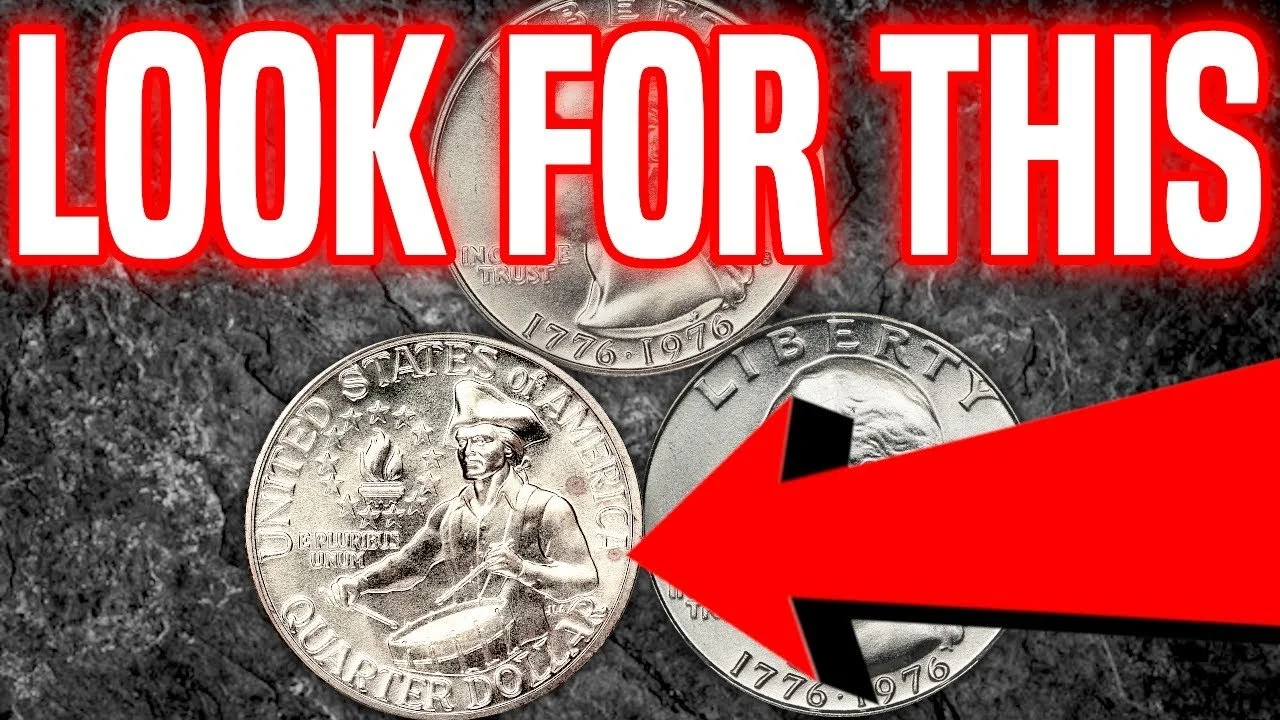Rare Bicentennial Quarter : In the world of coin collecting, treasures can often be found in the most unexpected places — like the loose change in your pocket. One such hidden gem is the rare Bicentennial Quarter that, against all odds, is valued at nearly $1 million and might still be circulating today.
What Is the Bicentennial Quarter?
The Bicentennial Quarter was minted in 1975 and 1976 to commemorate the 200th anniversary of the signing of the Declaration of Independence. Unlike the typical Washington quarter, the reverse side of the Bicentennial Quarter features a special design: a colonial drummer and a torch encircled by 13 stars. The obverse still displays George Washington, but the coin is stamped with the dual date “1776–1976.”
Millions of these quarters were produced, making them common in general circulation. However, among the sea of standard issues, a few extremely rare variants exist — and one in particular has stunned collectors and dealers alike with its jaw-dropping estimated value of $1 million.
What Makes This Quarter So Valuable?
The quarter in question is a rare error coin, and its value lies in several unique factors:
-
Struck in 40% Silver in Error: While the U.S. Mint did produce 40% silver Bicentennial Quarters, these were intended only for special collector sets. A small number of silver planchets were accidentally used for quarters meant for general circulation, making them extremely rare.
-
Proof Strike With Circulation Wear: One such coin was a proof strike — usually reserved for collectors — that somehow entered circulation. This makes it a one-of-a-kind anomaly: a proof coin with signs of everyday use, an oddity that increases both its rarity and mystique.
-
Flawless Minting Error: Some examples feature double dies, off-center strikes, or other minting mistakes that exponentially boost their value.
-
Certified Authenticity: Coins that have been authenticated and graded by trusted entities like the Professional Coin Grading Service (PCGS) or Numismatic Guaranty Company (NGC) carry greater value, especially if they score highly on the grading scale.
Could You Have One?
It’s unlikely — but not impossible. Many of these rare coins went unnoticed and ended up in jars, registers, and pockets. The million-dollar specimen reportedly turned up in a routine coin roll from a bank, sparking excitement among collectors.
To determine if you have a valuable Bicentennial Quarter, look for:
-
Silver coloring and weight (check against a standard quarter)
-
Mint marks, especially “S” for San Francisco proof coins
-
Errors or anomalies like doubling, unusual spacing, or off-center designs
-
Sharp details and luster, which indicate a proof or uncirculated coin
What Should You Do If You Find One?
If you think you’ve found a rare Bicentennial Quarter, don’t spend it! Instead:
-
Handle it carefully – avoid touching the surfaces to prevent damage.
-
Have it appraised – reach out to a reputable coin dealer or grading service.
-
Get it graded – certified coins fetch higher prices at auction.
A Hidden Fortune in Your Change?
The rare Bicentennial Quarter serves as a reminder that sometimes, incredible value hides in plain sight. While most of these quarters are worth only face value, a few extraordinary examples can command prices into the six or even seven figures. So the next time you receive change, take a closer look — you might just be holding history worth a fortune.
The Rare Bicentennial Quarter Valued at $1 Million Frequently Asked Questions (FAQs.)
Q1: What is a Bicentennial Quarter?
A: The Bicentennial Quarter is a special U.S. quarter minted in 1975 and 1976 to celebrate the 200th anniversary of the Declaration of Independence. It features a unique reverse design of a colonial drummer instead of the traditional eagle.
Q2: Why is one Bicentennial Quarter worth $1 million?
A: Most Bicentennial Quarters are common, but a few rare errors—such as those struck on 40% silver planchets intended for collector sets or proof strikes that accidentally entered circulation—can be worth up to $1 million due to their extreme rarity and historical significance.
Q3: How can I tell if I have a valuable Bicentennial Quarter?
A: Look for the following indicators:
-
A silver-colored coin with a weight of about 5.75 grams (heavier than a standard clad quarter).
-
Mint mark “S” (indicating San Francisco, often used for proof coins).
-
Errors like doubling, misstrikes, or off-center images.
-
A shiny, highly detailed surface suggesting a proof strike.
Q4: What is the difference between a regular and a rare Bicentennial Quarter?
A: Regular quarters were struck for everyday use and are composed of copper-nickel clad. Rare versions may be struck in silver, have minting errors, or be proof coins that somehow entered circulation.
Q5: Are all Bicentennial Quarters valuable?
A: No. Most are worth only their face value (25 cents), though circulated silver versions may be worth a few dollars. Only rare error coins, proof strikes in circulation, or silver planchet misstrikes are highly valuable.
